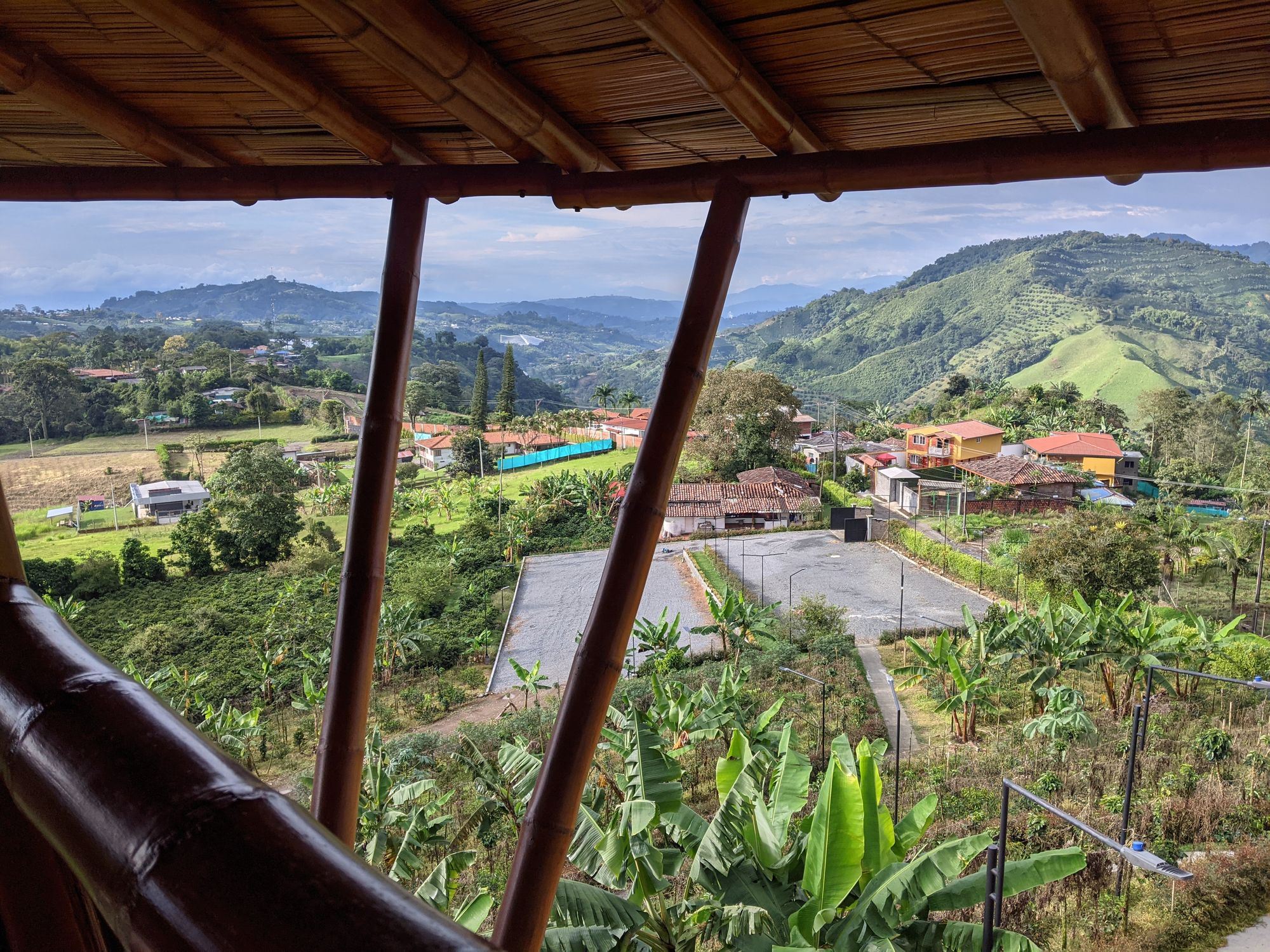Anyone growing up in the States during the 1970's remembers Juan Valdez, his donkey, and Colombian coffee. That marketing surge came and went but the coffee has only become better, and as this article points out it’s lately become a favorite at the World Barista Championship. Google "Colombian Coffee" and you will find that it is a favorite the world over known for its taste and aroma with notes ranging form citrus to floral and caramel to chocolate.

Although Colombia is the world's third largest exporter of coffee, there are some major differences between it and the other large export countries. One is that instead of large ecologically damaging mono farms, Colombia has 540,000 families growing coffee in hundreds of small farms in 24 different regions. Also because of the steep terrain in the Andes mountains where it is grown, it cannot be mechanically harvested, the berries are all picked by hand insuring ripe, quality beans.
If you are a coffee lover, visiting a working farm will change your view of that cup of java in a big way. My wife and I did just that when we took a trip to “Eje Cafetero” or the Coffee Triangle of Colombia. This large area is the axis of Colombian coffee culture and celebrates the beloved bean with theme parks, museums, farm tours, festivals, and great coffee.
We stayed in the city of Periera and the first thing we did was go off in search of a coffee shop. Near Parque Bolivar we entered Café Jazmin with it’s warm and inviting finished wood interior. I ordered an americano and Isabel a latte. My americano was served with the espresso pulled straight into the cup with hot water on the side. In this way I was able to sample the espresso straight as well as mix the americano to my liking. Isabel's latte was a work of art. It was a heady and delicious brew, and to know the coffee was grown on a nearby mountainside.

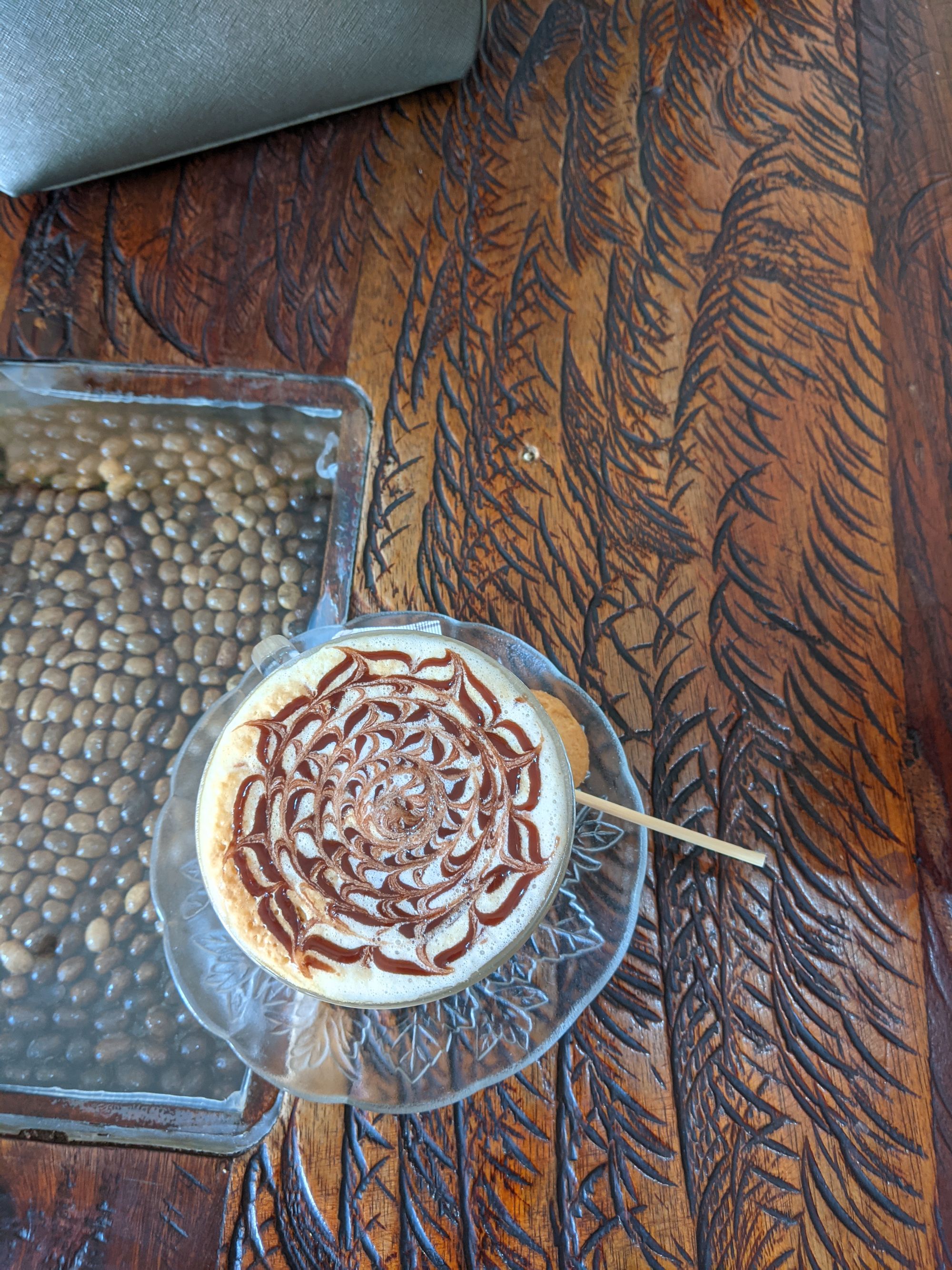
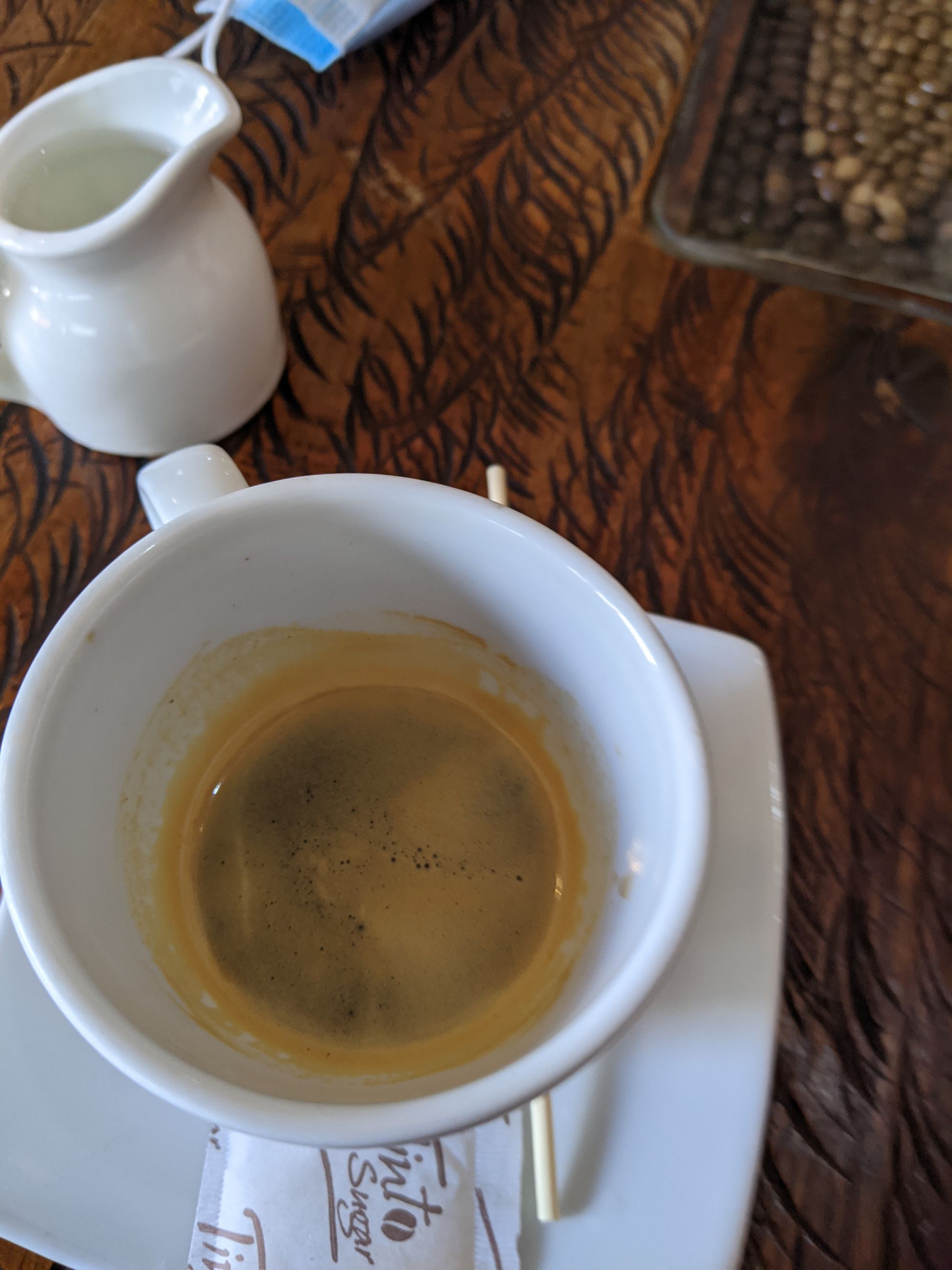
Jazmin Cafe, latte and americano
The next day we took a bus to the pueblo of Santa Rosa de Cabal where we wandered around the town square, enjoyed a coffee and then found a taxi to take us to the Finca del Café, a working coffee farm that also hosts guests. We were invited into the home of the hostess for a cup of coffee while we waited for others to arrive for the tour. There were only two others, a tourist from Germany who had brought along a bilingual Columbiana interpreter, lucky for me so I could also listen to the English interpretation.
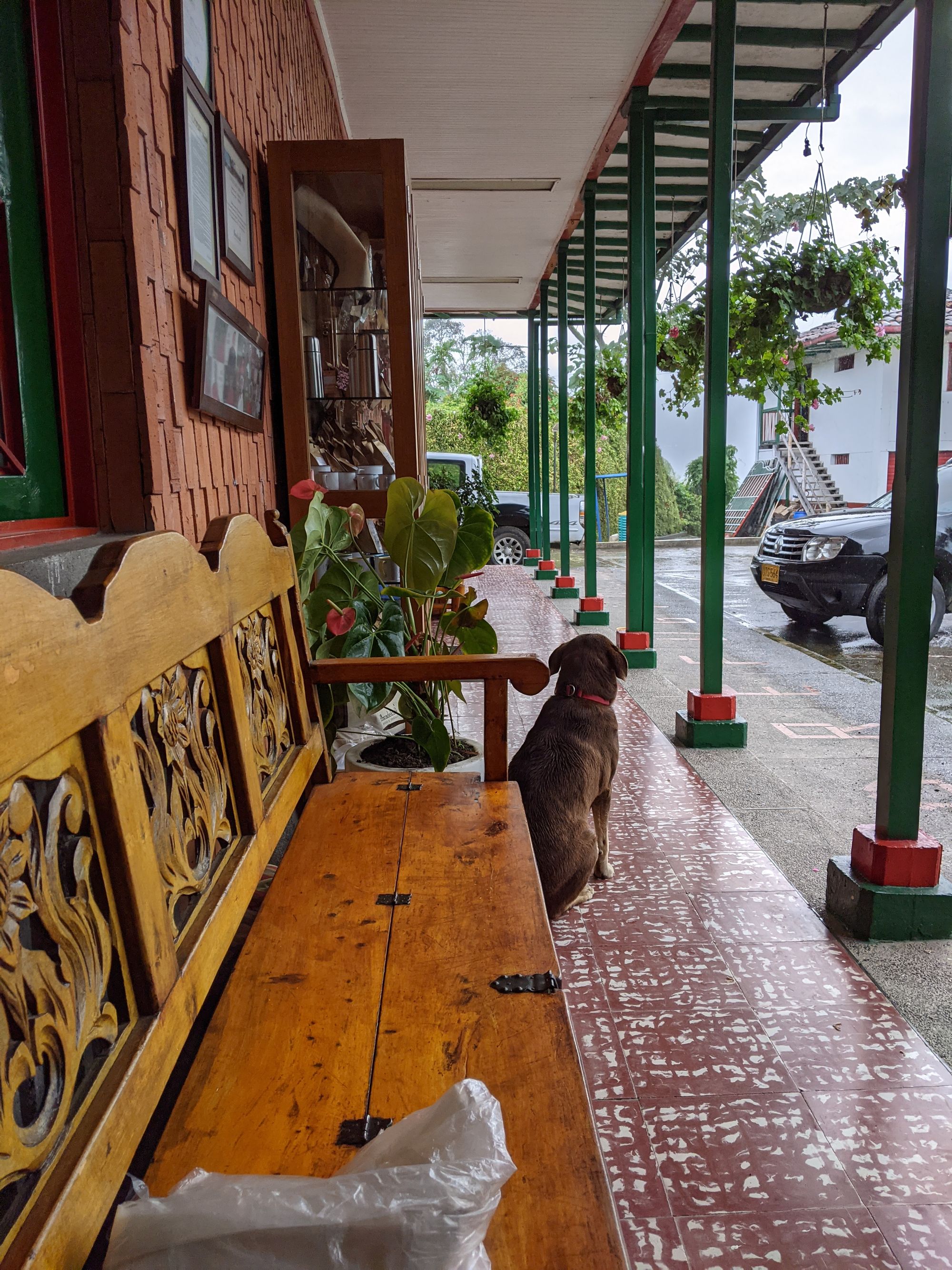
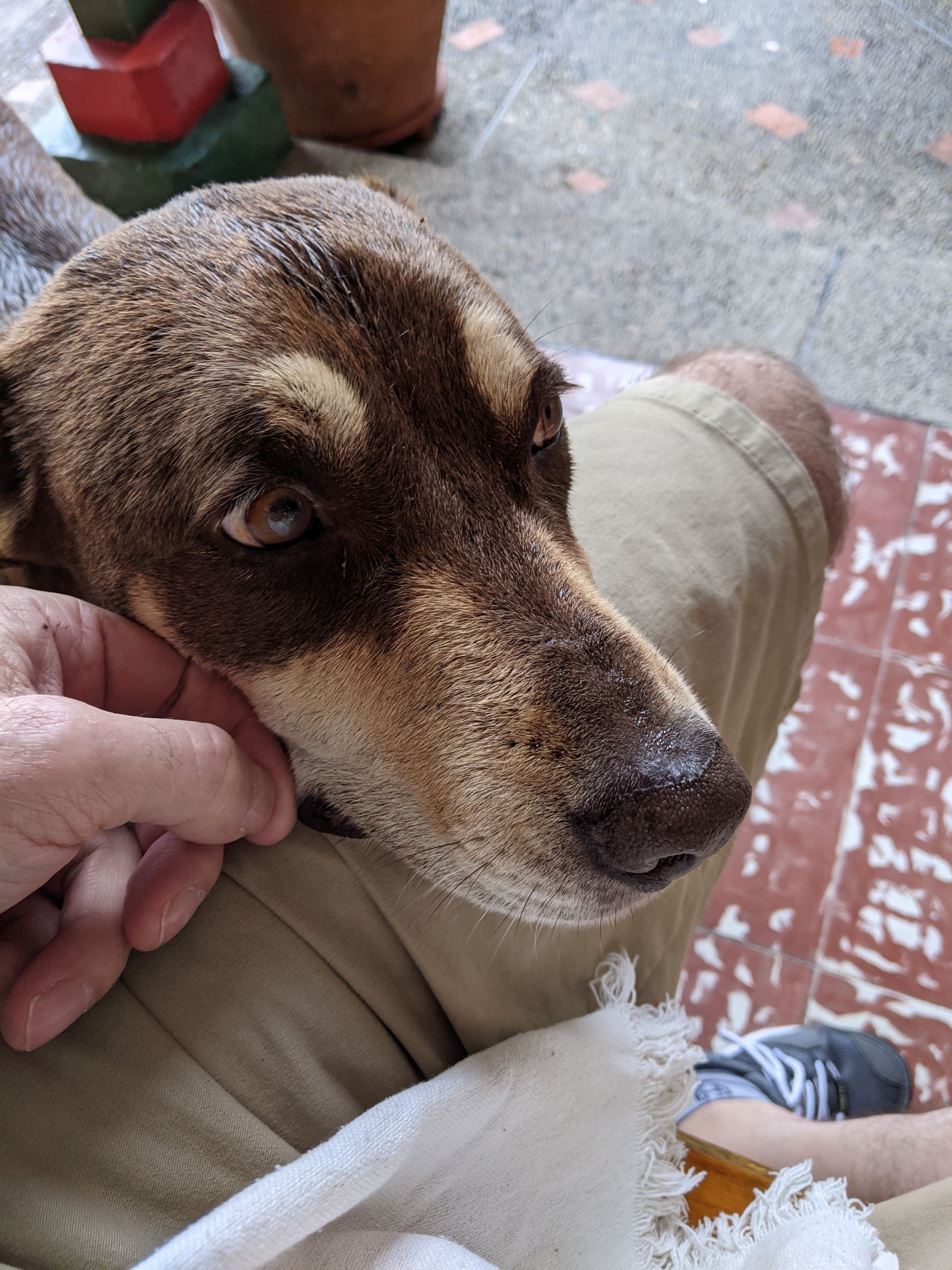
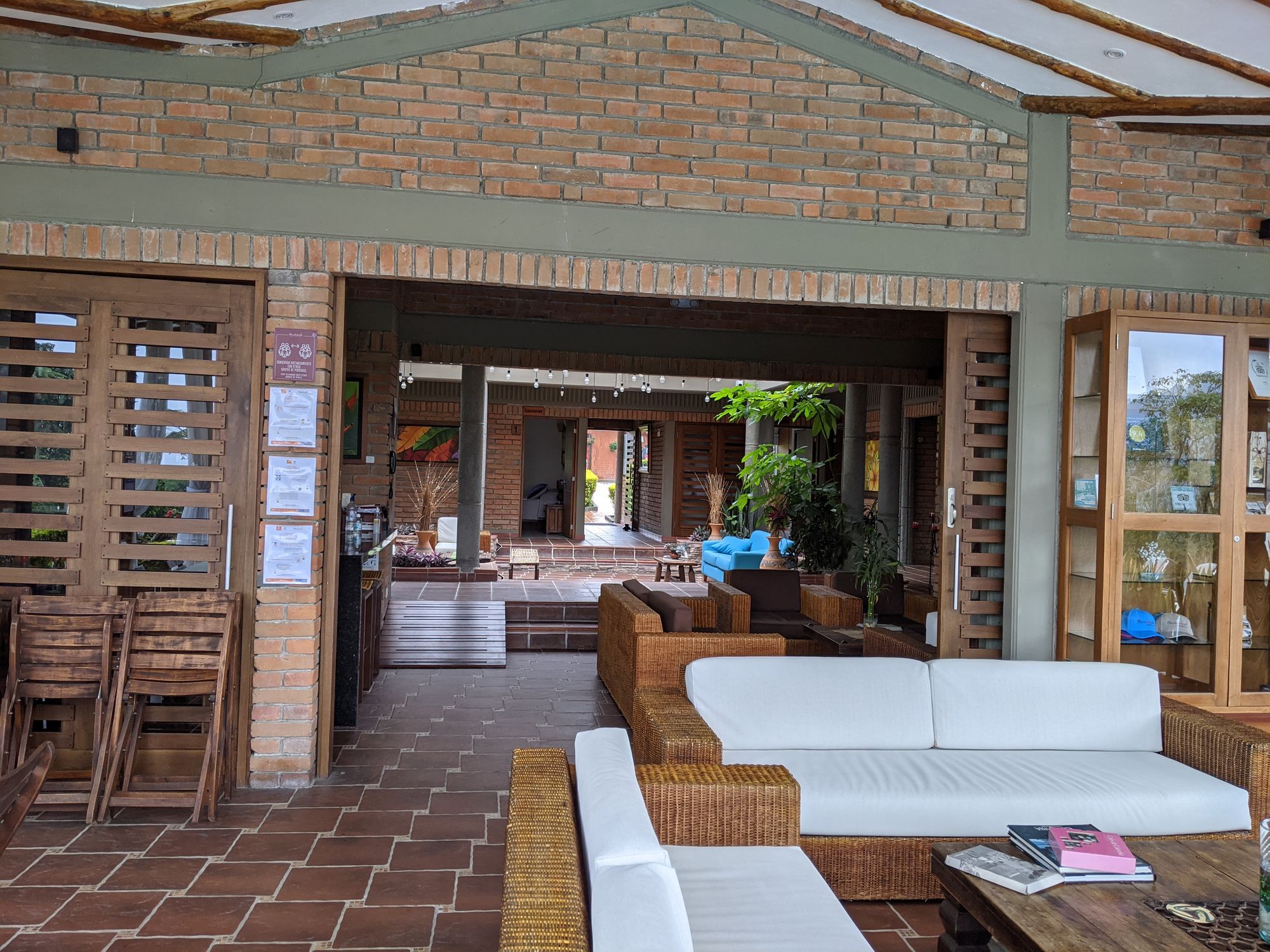
Finca del Cafe
We hiked around the farm and were shown all the steps of bringing the coffee from seed to cup. This includes planting and growing the plant, harvesting the cherries (as the unripe beans are called) by hand, removing the skin and pulp , drying, sorting, and finally roasting. Our guide was one of the family owners, and his pride and love of the farm and Colombian coffee was evident.
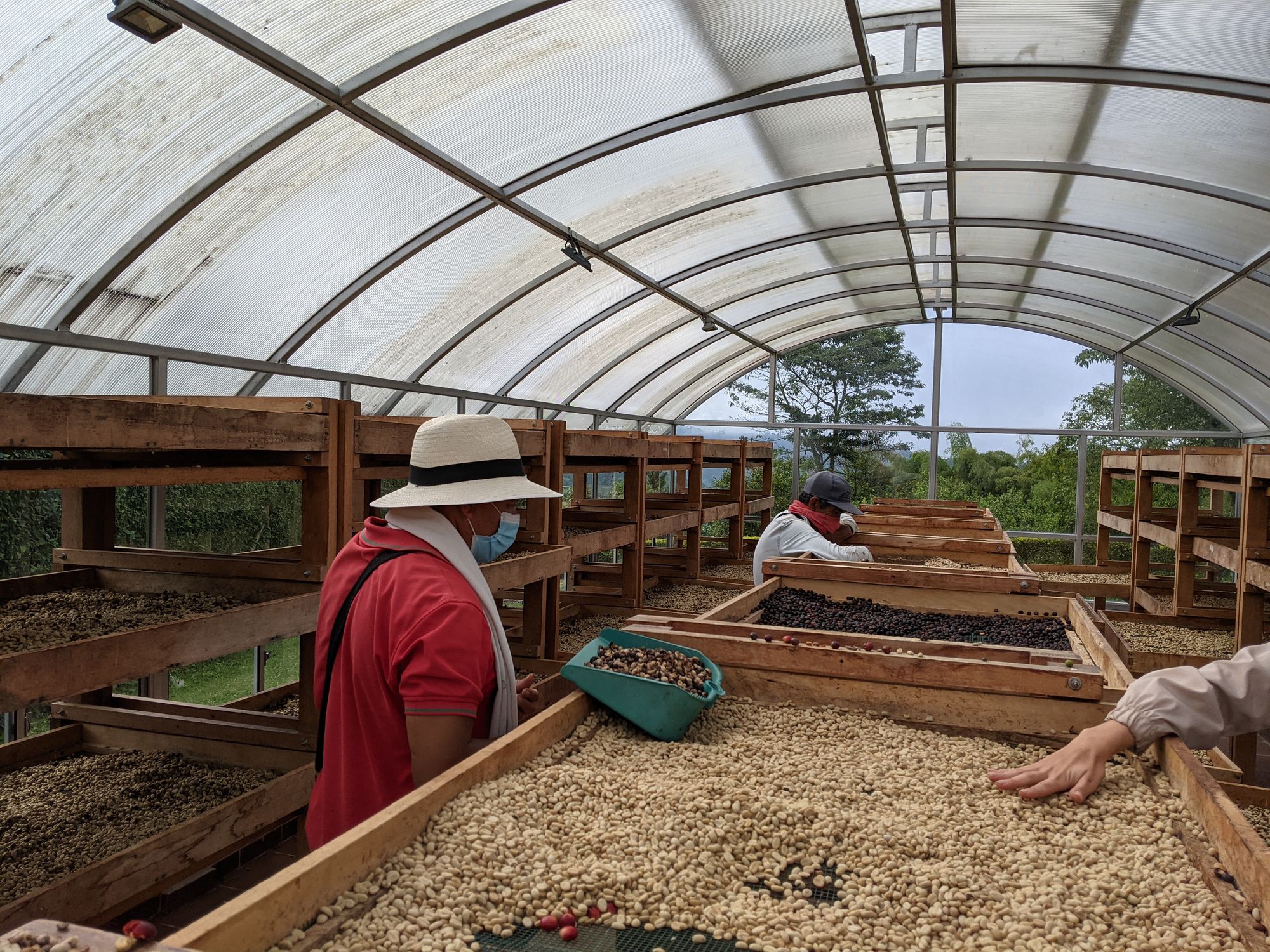
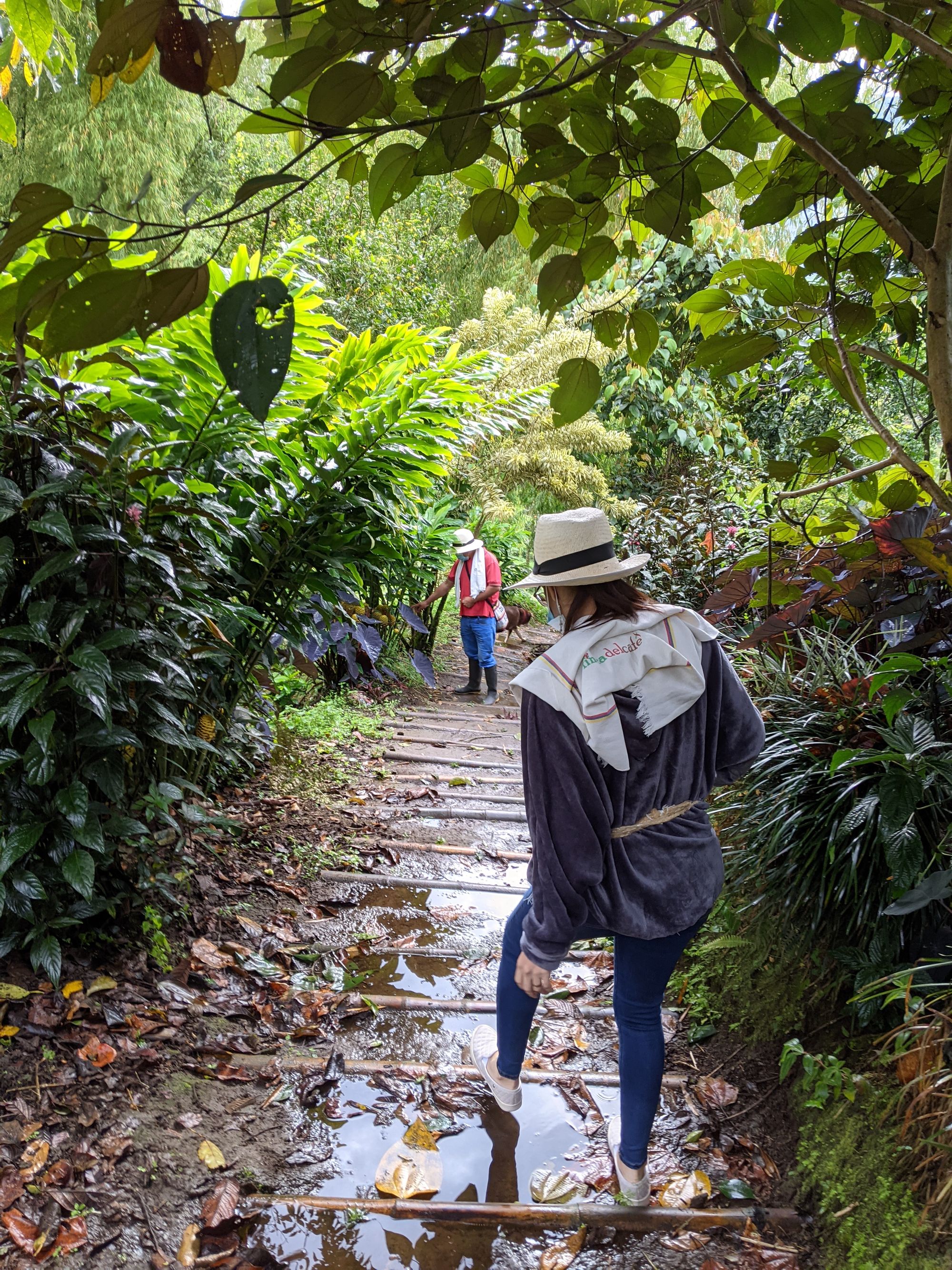

On the left, sorting and drying. Center, wandering the farm. Right, Isa tries her hand at harvesting.
Two things stood out to me; one is how labor intensive the work is to bring that cup of coffee to the table, and two; how the farm was part of the natural ecology of the mountain. The coffee plants were all over the steep hills of the farm, but so were grasses, trees, and other plants as well as wildlife. If you had simply wandered into this area you might well marvel at all the bushes full of red berries without even realizing you were in a farm.
Coffee farmers do not typically roast the beans but rather sell them to the roasters. However, at the end of our tour we were ushered into an old small one room farmhouse where a woman roasted some beans in a cast iron skillet, ground them in a hand mill, and made coffee with a pour over cloth bag. Needless to say that was one great cup of coffee!
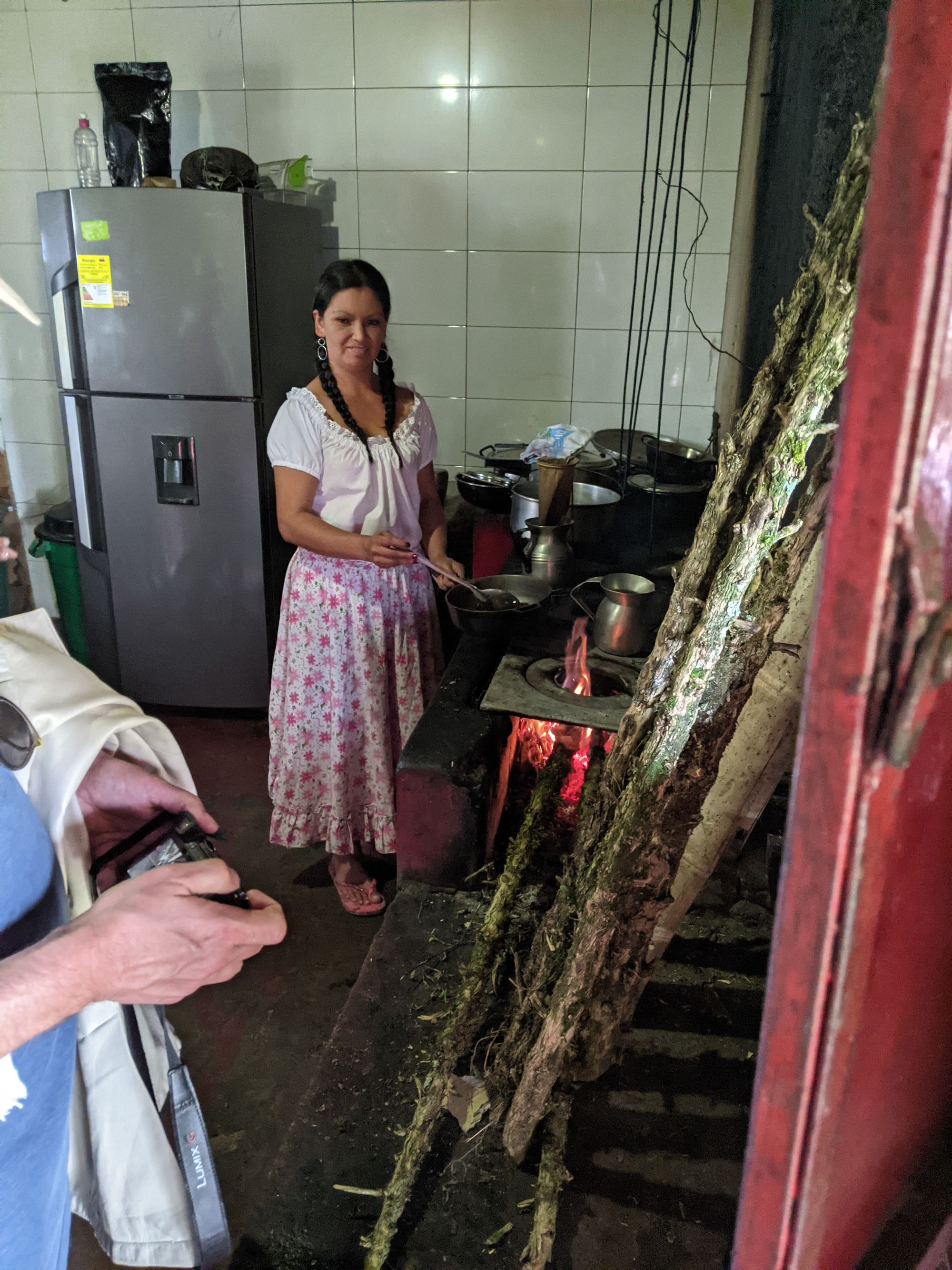

Roasting beans over a wood stove, and the resulting cup.
So far this has been my favorite Colombian adventure and I have a new appreciation of the work that goes into bringing me that cup of coffee I enjoy so much every morning. It takes about 35 coffee cherries (70 beans) to make a cup of coffee, and every one was picked and processed by someone, working hard on an Andean mountainside.
